What is the difference between porcelain and ceramics?
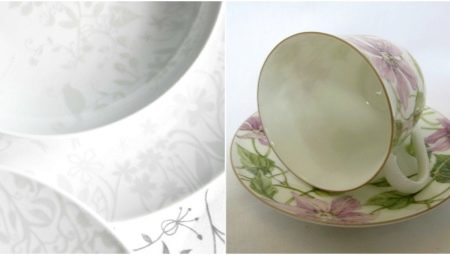
Since childhood, many have heard: "The porcelain service is only for the holidays!" On weekdays, the family was content with ceramic dishes, and a set was taken out on the festive table, to which all household members were to experience sacred awe. And why, few people understood, it seemed that the cups were made of the same material, and why porcelain stood out so much, it was difficult to say unequivocally. Handsome, smart, but ceramic cups and plates can be just that. It is worth understanding how these materials differ from each other.
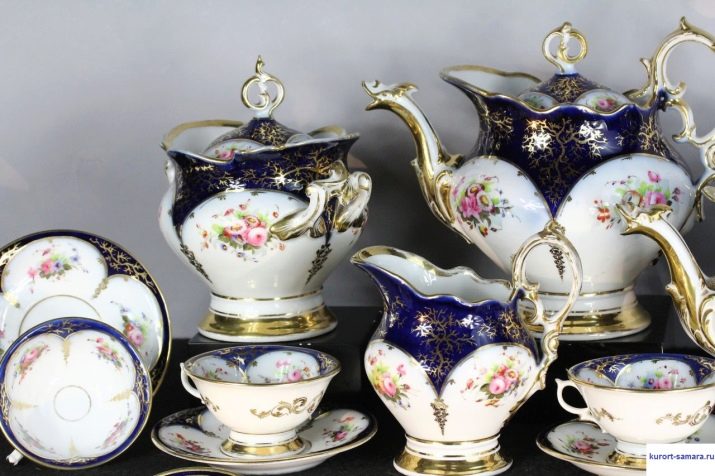
Difference in definitions
Ceramics are products made of various inorganic materials, made under high thermal impact. The history of ceramics goes back thousands of years, and all this time the essence of pottery has not changed. Technologies improved, the design changed, but the principle of working with clay and its firing essentially remained the same. Initially, as historians suggest, ceramics was made for everyday convenience - ceramic dishes appeared a long time ago and are alive today. The first ceramic toys could have ritual significance.
Nowadays, ceramics are used in mechanical engineering, medicine, construction, and science. For example, today there is nanoceramics - with its help complex technological devices are produced.
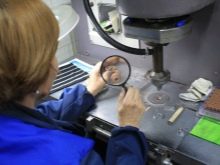
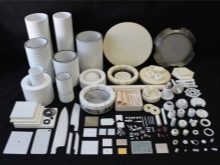

Porcelain differs from ceramics in that it is not a separate craft, but a kind of fine ceramics. A distinctive feature of porcelain is its visual lightness and the fact that this material is translucent.
It is more graceful, subtle and lends itself well to decor. Therefore, porcelain cannot be opposed to ceramics: it is a kind of it. Ceramics is too general a concept. A ceramist can be called both the one who makes clay pots, and the one who works on the creation of porcelain figurines.
Difference in composition and firing rules
You don't need to be an expert to be unable to distinguish porcelain from other materials. For example, if you hit it very carefully with a regular pencil, the sound will be clear and high. And it is inherent only in this material. The differences between porcelain lie in its other features.
- It is simply ideal for painting, and each region has its own painting traditions.... From Asia, you will bring an authentic service or individual dishes with traditional patterns and ornaments. Many people have porcelain cups from their grandmother at home. And not everyone knows that their tarnishing is not a reason to throw away the dishes, porcelain can be cleaned, and such a vintage set will become a decoration of your home.
- Preservation of appearance. I must say that porcelain can fade only after many, many years. It is truly unique in terms of external preservation. In the same faience, over time, small spider webs-cracks often appear, which simply speaks of natural changes in the material. Porcelain, on the other hand, is hard, and in this it compares favorably with its ceramic counterparts.
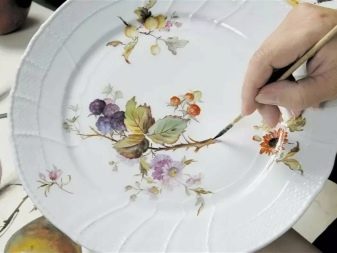
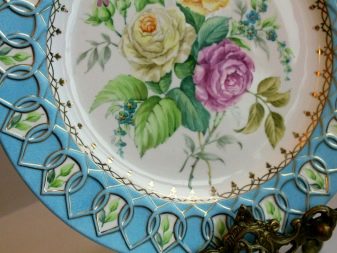
As already mentioned, porcelain is a type of pottery. Pottery can be fine or rough. In the first case, the composition has a fine-grained structure, which is why the shard is actually transparent. The structure of rough ceramics is coarse-grained, such a mass is used in pottery.
The composition of the porcelain mass is represented by fine mixtures of kaolin, quartz, feldspar, and aluminosilicates. The material has no pores, so it is more durable, harder, thermally stable. Many global porcelain brands have classified the recipes for their products.
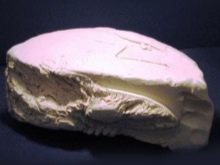
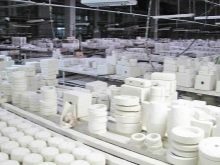
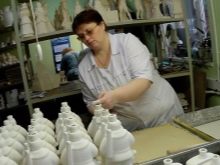
The material itself can be hard or soft. Solid is obtained by the technology of double firing under the influence of a temperature exceeding +1350 degrees. Soft porcelain is fired at a lower temperature. Visually, it is indistinguishable from solid, although experts consider it to be a more fragile material. Hard porcelain can be European (the main part of the composition is classic clay) and oriental (there is not much kaolin in the composition). Soft porcelain can be European, English and, of course, French.
Most often it is confused with faience: they are really similar in appearance, but faience can be more skillfully painted, and it is also cheaper.
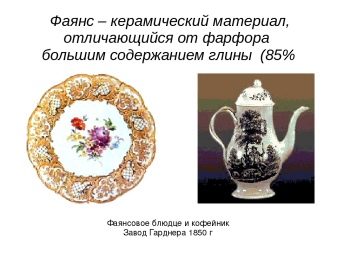
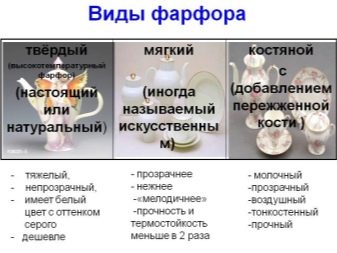
How to distinguish by appearance?
Porcelain products are never coated with glaze or paint in a conveyor way, that is, in a production way. Only hand painting can preserve and enhance the magnificence of the material. Naturally, such an item will cost more.
Porcelain can be differentiated by the following properties:
- at the bottom of the product there is always a rim that is not touched by the glaze: if it is white, then in your hands is porcelain;
- if a porcelain product is brought to the light, it will shine through, other ceramic samples cannot boast of this feature;
- if a porcelain product is bulky, then there will be no glaze at its bottom (firing is carried out at the highest temperatures, the glazed bottom in this case will simply stick to the stand);
- remember about the "musicality" of porcelain - if you knock on it, the sound will be clear and clear.


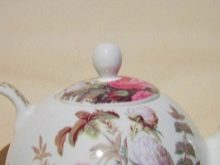
Experts distinguish English porcelain well from, for example, French. French material made of fine-grained glassy mass with glaze, it is ideal for painting experiments. English porcelain includes burnt bone of cattle, phosphate salts and kaolin, and outwardly resembles white alabaster. It is often used for painting with gilding and even jewelry.
Other European analogs of the material do not contain kaolin and although they are outwardly identical to porcelain, their composition still gravitates more towards glass. Many paints can be applied to such material: they are sintered with glaze and make the painting even more transparent and shiny.
In porcelain (if you compare it with the same faience) there is less clay, more than other components.This is what determines its glassiness, which is why it looks thinner than other ceramics.
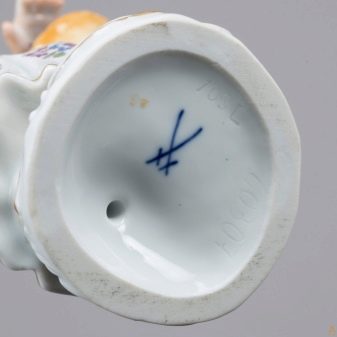

What is the best choice?
When buying cookware, we have several requirements for it: the price and quality must match each other, the design should not have flaws, and finally, the cookware should become a part of the kitchen and the house as a whole (and not seem like a foreign element). There are several options.
- Ceramics. This is an environmentally friendly material, it keeps the temperature perfectly, and is affordable in terms of price. Plates are convenient for storing food in the refrigerator and reheating food in the microwave.
But the material is afraid of temperature changes. The dishes can crack in a moment. Therefore, ceramic cups and plates, while still warm or hot, should not be washed or rinsed with cold water.
- Glass ceramics. These products have higher strength and durability, they will last you longer, but due to the fact that the dishes are stronger and will cost more. These are thin and elegant plates, cups, salad bowls, convenient both for festive serving and for everyday use. But to say that glass ceramics is not at all afraid of temperature changes is also wrong. Therefore, it is better not to arrange extreme checks on such dishes.
- Porcelain. An elite representative of tableware and that says it all. The lightness, transparency and beautiful ringing of porcelain are difficult to confuse with faience or glass ceramics. Real porcelain will always have rough edges of the bottom, even very old plates will shine through in the light.
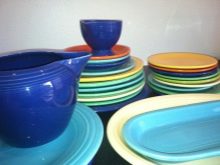
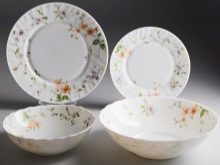
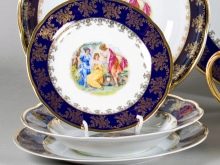
In most cases, all the representatives of this ceramic family are present at home: practical and inexpensive ceramics associated with a home, refined glass ceramics, as well as luxurious porcelain. Porcelain requires special care, if, of course, you want these products to be passed on to future generations. They do not wash it with household chemicals, do not use hot water, and wipe it from time to time with a soft cloth.
This material, more precisely, products made from it, can be glued and restored... There are pastes on sale today that do not leave a trace at the bonding site. The only moment is after restoration, porcelain ware will have to be used less often for its intended purpose. But porcelain figurines and vases can be stored for a long time and not somewhere in the closet, but in the most honorable place.
Dishes are, if not the face of the house, then the very dimples on the cheeks, which seem to be not so important, but with them comes charm and warmth. Even young children say that soup tastes better from one bowl than another.
Therefore, attention to this part of everyday life is understandable. Cookware serves not only practical purposes, but also the beauty of life, and this mission is not unimportant.
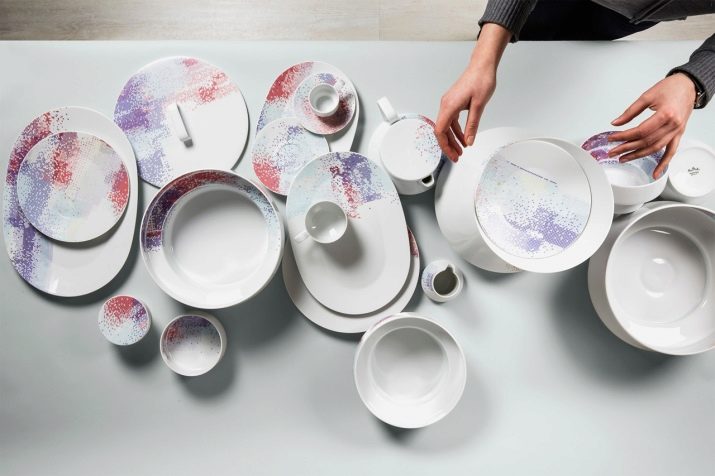
How ceramics differs from porcelain, see below.








